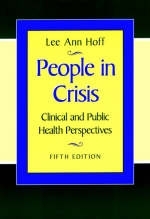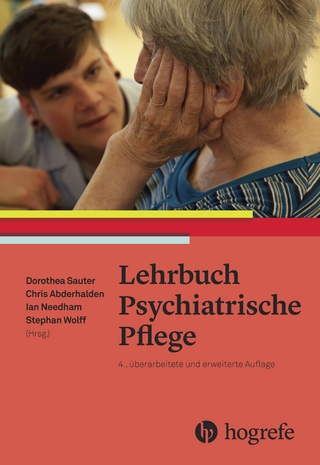
People in Crisis
Jossey-Bass Inc.,U.S. (Verlag)
978-0-7879-5421-5 (ISBN)
- Titel ist leider vergriffen;
keine Neuauflage - Artikel merken
Written by a pioneer in the field of community mental health, this updated edition of a classic resource helps prepare health care professionals and volunteers to work with the most vulnerable members of society-victims of crime, the homeless, battered wives, victims of environmental threat, and immigrants.
LEE ANN HOFF Lee Ann Hoff is the founding director of the Life Crisis Institute, an international not--for--profit organization based in Boston and Ottawa and is professor at the University of Massachusetts Lowell, College of Health Professions and Adjunct Professor at the University of Ottawa, Faculty of Health Sciences. Contact Lee Ann Hoff at www.crisisprograms.com
PART ONE: THE UNDERSTANDING AND PRACTICE OF CRISIS INTERVENTION. 1. CRISIS THEORY AND PRACTICE: INTRODUCTION AND OVERVIEW. What Is Crisis and Crisis Intervention? Views and Myths About People in Crisis and How to Help Them. The Evolution of Crisis Theory and Intervention Contexts. Feminist and Victimology Influences. Life Crises: A Psychosociocultural Perspective. Crisis Care: Intersection with Other Therapeutic Models. Basic Steps in Crisis Care. Standards for Crisis Services. 2. UNDERSTANDING PEOPLE IN CRISIS. The Origins of Crisis. Stress, Crisis, and Illness. The Crisis--Psychiatric Illness Interface. Development and Individual Manifestations of Crisis. The Sociocultural Context of Personal Crisis. Social Change Strategies in Comprehensive Crisis Care. 3. IDENTIFYING PEOPLE AT RISK. The Importance of Crisis Assessment. The Distinctiveness of Crisis Assessment. The Assessment Process. An Assessment Interview. Service Forms. 4. HELPING PEOPLE IN CRISIS. Communication and Rapport: The Immediate Context of Crisis Work. Planning with a Person or Family in Crisis. Developing a Service Contract. Evaluating the Crisis Intervention Plan. Working Through a Crisis: Intervention Strategies. Psychotropic Drugs: What Place in Crisis Intervention? Crisis Intervention Illustrations. 5. FAMILY AND SOCIAL NETWORK STRATEGIES DURING CRISIS. Social Aspects of Human Growth. Families in Crisis. Communities in Crisis. Individual, Family, and Community Interaction. Social Network and Group Process in Crisis Intervention. PART TWO: VIOLENCE AS ORIGIN OF AND RESPONSE TO CRISIS. 6. SUICIDE AND OTHER SELF--DESTRUCTIVE BEHAVIOR: UNDERSTANDING AND ASSESSMENT. A Framework for Understanding Self--Destructive Behavior. Perspectives, Myths, and Feelings About Self--Destructive People. Characteristics of Self--Destructive People. The Importance of Assessing Suicide Risk. 7. HELPING SELF--DESTRUCTIVE PEOPLE AND SURVIVORS OF SUICIDE. Comprehensive Service for Self--Destructive People. Intervention with Self--Destructive People: Case Examples. Helping Survivors in Crisis. 8. THE CRISIS OF VICTIMIZATION BY VIOLENCE. Theories on Violence and Victimization. Victimization Assessment Strategies. Child Abuse. Rape and Sexual Assault. Woman Battering. Crisis Counseling with an Abused Woman. Husband Beating. Battering of Lesbian, Gay, Bisexual, and Transgendered Partners. Abuse of Older Persons. Battering of Parents and Teachers by Children. Other Sources of Victimization. Victim Assistance After a Crime. 9. THE VIOLENT PERSON: INDIVIDUAL AND SOCIOCULTURAL FACTORS. Aggression and Violence: A Contextual Versus Adversarial Approach. Violence Against Police Officers and Health, Mental Health, and Crisis Workers. Crisis Intervention Training. Assessing the Risk of Assault and Homicide. The Medicalization of Crime and Violence in the Workplace. The Crisis of Youth Violence. Men Who Batter Women. Crises of People Prosecuted for Violence. Primary Prevention of Crime and Antisocial Behavior. 10. VIOLENCE AND CRISIS FROM DISASTER. Human Potential for Catastrophic Violence. Natural and Accidental Disaster: Prevention and Aid. Individual Responses to Disaster. Community Responses to Disaster. Disasters from Human Origins. PART THREE: CRISES RELATED TO SITUATIONAL AND TRANSITION STATES. 11. THREATS TO HEALTH STATUS AND SELF--IMAGE. Crisis Care in Primary Health Care Settings. Hazards to Physical and Emotional Health. Physical and Mental Handicap. Substance Abuse and Other Chronic Health Problems. Attitudes and the Crisis in Psychiatry. Rescue Workers, Nurses, Physicians, and Social Workers in Acute--Care Settings. 12. THREATS TO OCCUPATIONAL AND RESIDENTIAL SECURITY. Occupational Changes. Residential Changes. 13. STRESS AND CHANGE DURING LIFE PASSAGES. Rites of Passage: Traditional and Contemporary. Birth and Parenthood. Adolescence and Young Adulthood. Intimate Relationships: Beginnings and Endings. Middle Age. Old Age. Death.
| Erscheint lt. Verlag | 30.4.2001 |
|---|---|
| Zusatzinfo | Ill. |
| Verlagsort | New York |
| Sprache | englisch |
| Maße | 178 x 253 mm |
| Gewicht | 1049 g |
| Themenwelt | Medizin / Pharmazie ► Gesundheitswesen |
| Pflege ► Fachpflege ► Neurologie / Psychiatrie | |
| ISBN-10 | 0-7879-5421-7 / 0787954217 |
| ISBN-13 | 978-0-7879-5421-5 / 9780787954215 |
| Zustand | Neuware |
| Haben Sie eine Frage zum Produkt? |
aus dem Bereich


